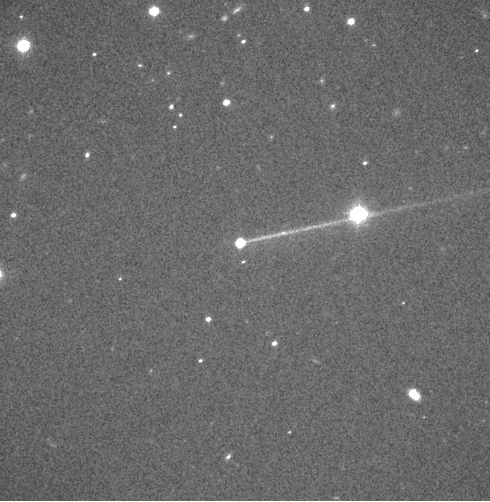An analysis of the results found the momentum was significantly enhanced by the recoil created from streams of particles produced by the impact.
The team of scientists calculated the momentum transferred to Dimorphos, the smaller asteroid of the binary Didymos, as a result of the impact, the Beta factor, to learn its displacement with respect to its primary asteroid Didymos. Prior tp that, they could infer the shape of Dimorphos from images recorded by DART’s DRACO camera, but without knowing the mass it was difficult to estimate the momentum transfer onto Dimophos.
After the impact, they had new information that made a big difference in their ability to make accurate calculations—they knew that the impact changed the period of Dimorphos’ orbit by 33 minutes.

A dusty trail shapes the story of DART’s impact. Credit: NASA
With a real data point, the team was able to run Monte Carlo simulations using random combinations of variables such as whether Dimorphos was more or less massive than Didymos. Better calibration is needed because the amount of momentum transported by ejecta was at the far end of projections, likely because Dimorphos is basically a rubble pile—an agglomeration of lots of tiny and not so tiny pebbles.
Neither Dimorphos nor Didymos were a threat to Earth before or after DART’s controlled collision with Dimorphos, which made it a good test case. A mission by the European Space Agency's Hera project will accurately measure the mass of Dimorphos in 2027. That will allow the DART team to further refine the results of world’s first dedicated asteroid deflection mission.





Comments